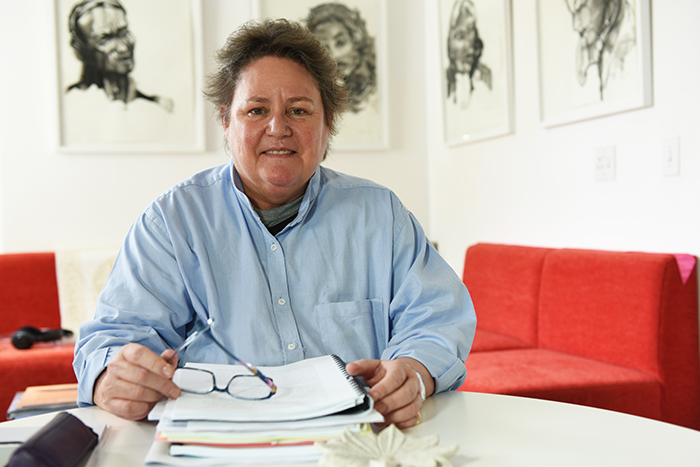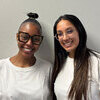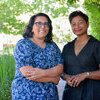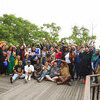Denny heads new national gynaecological cancer centre
23 March 2015 | Story by Newsroom
With HIV and TB taking the lion's share of South Africa's medical resources, diseases like cervical cancer take a back seat. This is despite the fact that it's the second commonest cancer among women in the developing world and responsible for 85% of cancer cases and deaths. But the new South African Medical Research Council's Gynaecological Cancer Research Centre hopes to change that. The centre's new head, UCT's Professor Lynette Denny, spoke with Abigail Calata.
What is the situation with regards cervical cancer in South Africa?
In South Africa it's estimated that approximately 6 000 women develop cervical cancer every year and over 80% of these women are black. This is very much a disease linked to equity of access to healthcare, and the high incidence of cervical cancer in black South African women is a reflection of the lack of access to screening. Cervical cancer is preventable through Pap smear screening but this has historically not been available to the majority of black or uninsured South African women or those living in low- to middle-income countries.
What is the importance to UCT of this cancer centre?
Cancer as a subject has been very poorly funded and researched in most South African universities, including UCT, largely due to the overwhelming burden of communicable diseases such as TB and HIV, and diseases related to maternal mortality and nutrition. However, as we transition and our population ages, cancer has become an increasingly important public health disease and for UCT to be awarded this grant is a great opportunity to start multidisciplinary, cutting-edge research.
What kind of research will be done at the centre?
The focus will be on gynaecological cancers, but the key is that we want to work from the laboratory to the bedside, in other words we want to work collaboratively with both clinicians and basic scientists.
Which other members of Faculty of Health Sciences will be working at the centre, and in what capacity?
There are 14 key members in the team and each has their own team. These vary in size, but we imagine the centre will provide research opportunities for some 30 people.
How many different disciplines will be represented in the centre?
The main groups will be immunology, virology, pathology, microbiology, gynaecology oncology, radiation oncology, molecular pathology, and biochemistry.
Will the centre be based at Groote Schuur Hospital?
Yes, but we have a collaboration with Walter Sisulu University and Frere and Cecilia Makiwane Hospitals in the Eastern Cape.
What will Groote Schuur's involvement with the centre entail?
The centre will function around the GSH radiation oncology hub and the Faculty of Health Sciences.
What does it mean to you personally to head up this centre?
It's a huge challenge. I am a clinician and working closely with basic scientists is going to require a lot of adjusting and learning.
What is the connection between the different types of cancer that the three SAMRC centres will concentrate on?
The three centres will focus on different cancers. The centre at the University of the Witwatersrand will focus on solid tumours, such as breast cancers, while the unit in Durban – which is not yet a centre but is receiving seed funding – will focus on gastrointestinal tract cancers.
What was the process to select the institutes hosting the centres?
National and international expert reviewers screened the applications. The most important requirements were strong leadership, experience, and a history of publishing in high-impact scientific journals.
Video:
UCT's cancer research centre is one of three in South Africa funded by the SAMRC. Watch this video for more insight into the vision.
Story by Abigail Calata. Photo by Michael Hammond.
 This work is licensed under a Creative Commons Attribution-NoDerivatives 4.0 International License.
This work is licensed under a Creative Commons Attribution-NoDerivatives 4.0 International License.
Please view the republishing articles page for more information.










